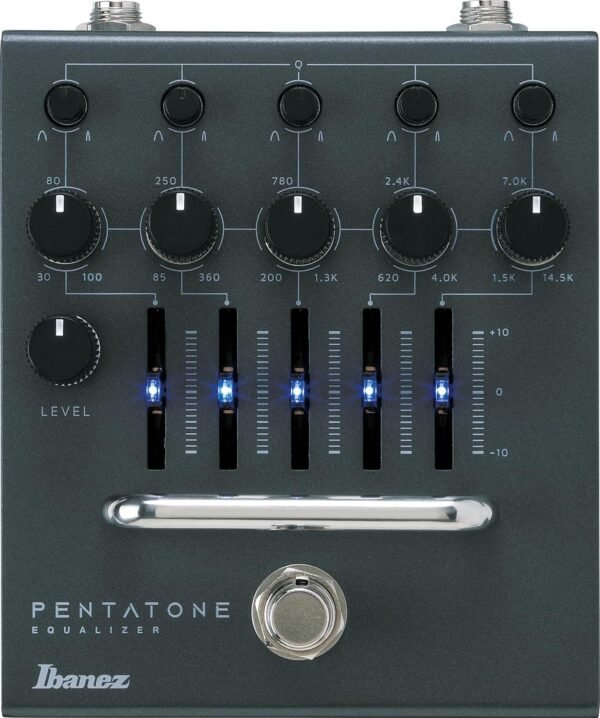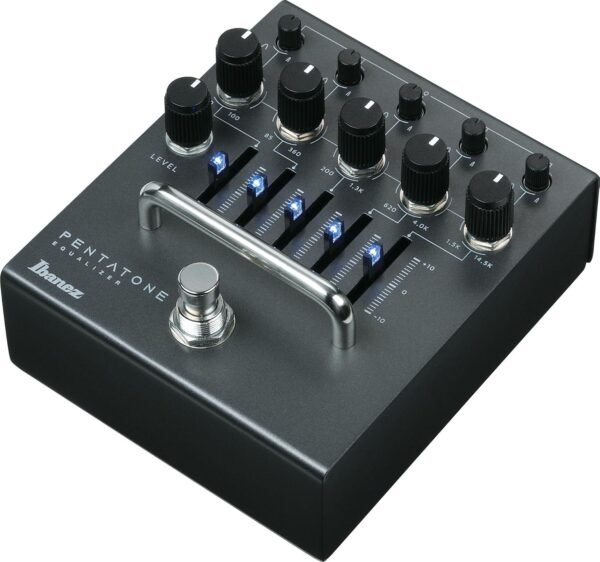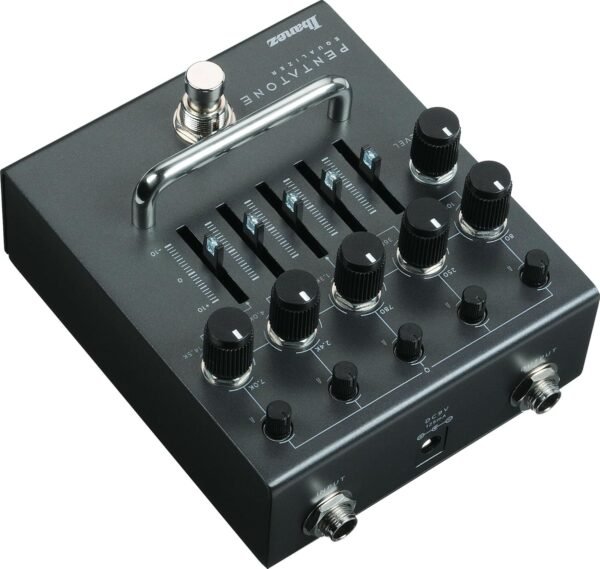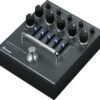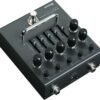Ibanez PTEQ Pentatone 5-band Parametric EQ Pedal review for guitar enthusiasts
Ibanez PTEQ Pentatone 5-band Parametric EQ Pedal review for guitar enthusiasts
- Exceptional tonal precision with a 5-band parametric EQ, allowing for highly detailed sound adjustments.
- The wide frequency range from 30Hz to 14.5kHz ensures versatile applications across different musical styles.
- Intuitive controls like level faders and Q adjustments make fine-tuning effortless even during live performances.
- Sturdy and reliable build quality ensures durability for frequent use, whether on stage or in the studio.
- Compact design fits seamlessly into pedalboards without taking up excessive space.
As an Amazon Associate I earn from qualifying purchases.
Description
Design and Build Quality
The Ibanez PTEQ Pentatone 5-band Parametric EQ Pedal immediately caught my attention with its sleek, professional look. The sturdy metal casing exudes durability, and it feels like it’s built to withstand the roughest of pedalboard setups. I’ve seen pedals that feel flimsy or have poorly placed knobs, but this one avoids those pitfalls entirely. The five adjustable bands are clearly labeled, and the level faders slide smoothly, giving off a sense of precision I really appreciated. Its compact size also ensures it fits nicely into my pedalboard without hogging space, which is always a win when juggling multiple effects.
Performance and Sound Quality
I tested this EQ pedal across several electric guitars and amp setups, and I’ll say it: this thing delivers. The 30Hz to 14.5kHz frequency range allows for an incredible level of tone shaping. Whether I wanted to boost the low-end to bring out a full-bodied warmth or cut through the midrange for crisp clarity, the pedal handled it all effortlessly. The Q controls are a game-changer, letting me fine-tune the width of the frequency bands. I found this particularly useful for dialing in precise tones during live sessions. The master volume control is another great addition, making it easier to balance the EQ adjustments with the overall output.
Positives
The key benefits of this EQ pedal make it hard to ignore for anyone serious about shaping their guitar tone.
- Wide frequency range (30Hz to 14.5kHz) ensures versatility across musical genres.
- Intuitive level faders and Q controls simplify fine-tuning your sound.
- Durable construction means it’s roadworthy and reliable.
- Compact design fits seamlessly into pedalboard setups.
Negative Attributes
However, no pedal is without its shortcomings, and there are a few areas where this one could improve.
- No onboard presets, which would have been handy for quick tone switches during performances.
- The price point may feel high for beginners or casual players.
- Slight learning curve for those unfamiliar with parametric EQs.
Target Audience
I’d recommend this EQ pedal to intermediate and professional guitarists who are serious about tone customization. Beginners might find it a bit overwhelming at first, but once you understand how parametric EQs work, it’s a powerful tool. It’s especially useful for players who perform live or record in the studio and need precise control over their sound. Whether you play blues, metal, or anything in between, this pedal has something to offer.
Competing Products
Compared to other EQ pedals like the Boss GE-7 or the MXR Ten Band EQ, the Ibanez stands out for its parametric controls. While the GE-7 is an industry classic, its lack of Q control means less precision. The MXR, on the other hand, offers more frequency bands, but its fixed Q settings feel limiting when compared to the Ibanez. The Pentatone EQ pedal strikes a balance between versatility and ease of use, though it may not match the Boss GE-7’s affordability or the MXR’s sheer options for band tweaking. For me, the parametric flexibility makes this product worth considering over its competitors.
Value for Money
When it comes to cost-effectiveness, this pedal sits on the higher end of the spectrum. However, the features it packs—like the Q controls, wide frequency range, and durable build—justify the investment for those who need precision and reliability. If you’re someone who values sound quality over budget constraints, this pedal offers excellent value for price. For casual players, though, it might feel like overkill, especially since cheaper EQ pedals can handle basic tone-shaping tasks.
Using this pedal was both fun and enlightening, and while it’s not perfect, the level of control it offers over my tone makes it a solid addition to any guitarist’s rig.

